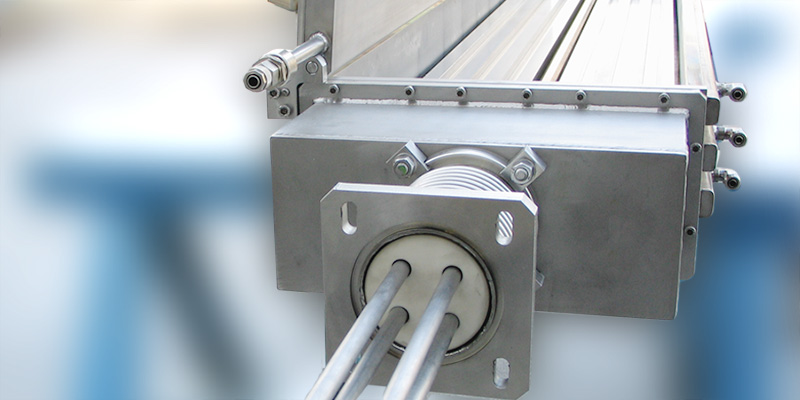The Complete Guide to Electrical Wiring Repair: How to Safely Fix and Maintain Your Home’s Electrical System
- by Tereso Sobo
- 2 weeks ago
- 0 comments

1. Understanding Your Home’s Electrical System
Before diving into electrical wiring repair, it’s crucial to have a solid understanding of how your home’s electrical system works. Electricity is a fundamental aspect of our modern lives, powering everything from lights to appliances. At its core, electrical wiring allows the flow of electricity from the main power source to various outlets and devices within your home.
How Does Electrical Wiring Work?
Electrical wiring consists of conductive materials, usually copper or aluminum, that carry electric current from one point to another. The wiring is connected to a main electrical panel, which distributes power to different circuits throughout your home. Each circuit is protected by a circuit breaker or fuse, which automatically shuts off the circuit in the event of an overload or fault.
The Components of an Electrical System
In addition to wiring, your home’s electrical system includes several key components. These include outlets, switches, light fixtures, and electrical panels. Outlets provide power for plugging in appliances and devices, while switches control the flow of electricity to lights and other fixtures. The electrical panel, also known as the breaker box, is the central hub that distributes electricity to different circuits in your home.
Assessing the Condition of Your Home’s Electrical System
Before attempting any electrical wiring repair, it’s important to assess the condition of your home’s electrical system. Signs of potential problems include flickering lights, frequently tripping circuit breakers, or outlets that feel warm to the touch. If you notice any of these issues, it’s crucial to address them promptly to avoid potential hazards such as electrical fires or electrocution.
2. Common Electrical Wiring Problems and Solutions
Electrical wiring problems can range from simple issues to more complex challenges. Identifying and addressing these problems can help ensure the safety and functionality of your home’s electrical system.
Identifying and Troubleshooting Circuit Breaker Issues
A common electrical wiring problem is a circuit breaker that frequently trips. This can be caused by overloading the circuit with too many devices or appliances. To troubleshoot this issue, start by unplugging or turning off unnecessary devices on the circuit. If the problem persists, you may need to redistribute the load by moving devices to different circuits or upgrading the circuit’s capacity.
Dealing with Faulty Outlets and Switches
Faulty outlets and switches are another common electrical wiring problem. Signs of faulty outlets include loose plugs, sparking, or outlets that don’t provide power. Switches that fail to turn on lights or appliances can also indicate a wiring issue. To address these problems, turn off the power to the affected circuit at the electrical panel and replace the faulty outlet or switch. Make sure to follow safety precautions and use a voltage tester to confirm the power is off before starting any repairs.
Handling Overloaded Circuits and Power Surges
Overloaded circuits and power surges can pose a risk to your home’s electrical system. Overloading can occur when multiple high-wattage devices are connected to the same circuit, exceeding its capacity. Power surges, on the other hand, are sudden increases in electrical voltage that can damage sensitive electronics. To prevent overloading, distribute heavy electrical loads across different circuits and consider installing surge protectors to safeguard valuable electronics.
3. Tools and Techniques for Electrical Wiring Repair
When it comes to electrical wiring repair, having the right tools and following proper techniques is essential for safety and effectiveness.
Essential Tools for Electrical Wiring Repair
Some essential tools for electrical wiring repair include a voltage tester, wire strippers, pliers, screwdrivers, and electrical tape. A voltage tester helps you confirm that the power is off before working on a circuit, while wire strippers ensure clean and precise wire connections. Pliers and screwdrivers are necessary for tightening screws and connecting wires, and electrical tape provides insulation for exposed wires.
Proper Safety Precautions for DIY Electrical Repair
While some electrical wiring repairs can be done as DIY projects, it’s crucial to prioritize safety. Before starting any repairs, always turn off the power to the affected circuit at the electrical panel. Use a voltage tester to confirm the power is off and wear protective gear such as gloves and safety glasses. It’s also important to follow local electrical codes and regulations to ensure the repairs meet safety standards.
Step-by-Step Guide to Replacing Electrical Wiring
Replacing electrical wiring should only be done by experienced individuals or licensed electricians. However, understanding the basic steps can provide insight into the process. These steps include turning off the power, removing the old wiring, installing new wiring, making proper wire connections, and testing the circuit to ensure it’s functioning correctly. It’s crucial to follow all safety precautions and consult a professional if you’re unsure about any step of the process.
4. Maintaining and Upgrading Your Home’s Electrical System
Maintaining and upgrading your home’s electrical system is essential for safety and efficiency. Regular maintenance and upgrading to meet modern electrical demands can help prevent problems and ensure the smooth operation of your electrical system.
Regular Maintenance Tips for Safe Electrical Wiring
To maintain safe electrical wiring, there are a few key tips to keep in mind. Regularly inspect outlets and switches for signs of wear or damage and replace them if necessary. Keep electrical cords and cables organized and avoid overloading outlets and extension cords. Additionally, consider scheduling periodic electrical system inspections by a licensed electrician to identify any potential issues before they become major problems.
When to Hire a Professional Electrician for Wiring Upgrades
While some electrical upgrades can be done as DIY projects, certain situations require the expertise of a professional electrician. If you’re planning a major renovation or addition to your home, it’s important to consult with a licensed electrician to ensure the electrical system can accommodate the increased demand. Additionally, if you’re experiencing frequent electrical problems or if your home’s electrical system is old and outdated, a professional electrician can assess the situation and recommend the necessary upgrades.
Integrating Smart Technology into Your Home’s Electrical System
The integration of smart technology into homes is becoming increasingly popular. Smart devices, such as smart thermostats and lighting systems, offer convenience, energy efficiency, and enhanced control over your home’s electrical system. Before incorporating smart technology, make sure your electrical system is compatible and consider hiring a professional to install and set up the devices correctly.
FAQ
Question: What is electrical wiring? Answer: Electrical wiring consists of conductive materials, usually copper or aluminum, that carry electric current from one point to another.
Question: How does electrical wiring work? Answer: Electrical wiring allows the flow of electricity from the main power source to various outlets and devices within your home. It is connected to a main electrical panel, which distributes power to different circuits throughout your home.
Question: What are the components of an electrical system? Answer: The components of an electrical system include wiring, outlets, switches, light fixtures, and the electrical panel (breaker box).
Question: How can I assess the condition of my home’s electrical system? Answer: Signs of potential problems include flickering lights, frequently tripping circuit breakers, or warm outlets. If you notice these issues, it’s crucial to address them promptly to avoid potential hazards.
Question: What are common electrical wiring problems? Answer: Common electrical wiring problems include circuit breaker issues, faulty outlets and switches, and overloaded circuits and power surges.
Question: What tools do I need for electrical wiring repair? Answer: Essential tools for electrical wiring repair include a voltage tester, wire strippers, pliers, screwdrivers, and electrical tape.
Question: What safety precautions should I take for DIY electrical repair? Answer: Before starting any repairs, always turn off the power, use a voltage tester to confirm it is off, and wear protective gear such as gloves and safety glasses.
Question: When should I hire a professional electrician for wiring upgrades? Answer: If you’re planning a major renovation, experiencing frequent electrical problems, or have an outdated electrical system, it’s important to consult with a professional electrician.












